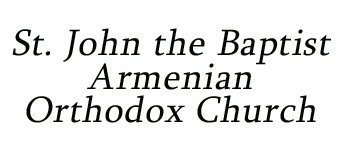Rabbi Shapiro at Milwaukee Martyrs Day
Jewish Leader Speaks on the Genocide and the Holocaust
By David Luhrssen
Milwaukee, WI- As part of its remembrance of the Armenian Genocide, St. John the Baptist Armenian Church has long hosted a madagh dinner followed by a speaker on the Sunday closest to Martyrs Day. This year, on April 22, 2012, the suburban Milwaukee parish invited a prominent local rabbi, Ronald Shapiro, to give a presentation after dinner. Aside from his work at Milwaukee’s Congregation Shalom, Rabbi Shapiro teaches contemporary Jewish studies at Cardinal Stritch University and is active in the city’s interfaith movement.
In his remarks, Shapiro spoke of the great similarity between the cultures and traditions of the Armenian and Jewish peoples. He surprised even the most knowledgeable in attendance by referencing a 4th century Persian persecution of both groups, living as neighbors, involving the sort of deportations common to both the Genocide and the Holocaust in the 20th century. He also spoke of the coincidence between the late 19th century pogroms of Eastern Europe and the massacres in the Ottoman Empire that drove significant populations of Jews and Armenians to refuge in other lands, including the U.S. During many dark centuries both groups looked forward to the reestablishment of homelands where their cultures could be nurtured. “We have been victims of others who believed they had the absolute view of what every human being must be,” he said. “Armenians and Jews have often been at the receiving end of that hatred.”
Shapiro also spoke of Mount Ararat as a common symbol of rebirth for both nations. “Noah was not Jewish,” he began, “and Adam was not Jewish,” he continued. “Adam in Hebrew simply means human being—not just man or woman but human being. No one can say we are better than anyone else by virtue of lineage. We have so much in common as humans created in God’s image.”
The rabbi praised the St. John congregation for its many young members and extolled the value of passing traditions on from one generation to the next. An example was the talk given by St. John’s Nicole Kashian, 18, as a preface to Shapiro’s presentation. She reiterated the facts of the Armenian Genocide and focused on its denial, pointing out that the Genocide was better known in World War I than in the 21st century. As evidence, she cited the New York Times, which published no less than 145 articles during the Genocide and called the murder “systematic” and “authorized.” Yet, unctuous U.S. and European Union officials continue to waffle and the Turkish government continues to encourage Genocide denial. “We cannot forget,” she concluded. “We will always remember.”
St. John was also host of a joint Martyrs Day commemoration on the evening of April 24, with a vespers and requiem service, with clergy from St John Armenian Church of Greenfield, Holy Resurrection Armenian Church in South Milwaukee and St. Mesrob and St. Hagop Armenian Churches in Racine, WI, participating. During the service, Greenfield Alderwoman Shirley Saryan presented the Martyrs’ Day Proclamation from the Mayor of the City of Greenfield to Der Nareg.


